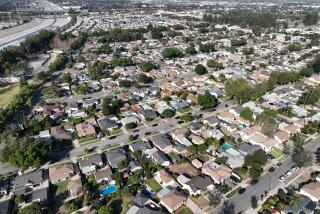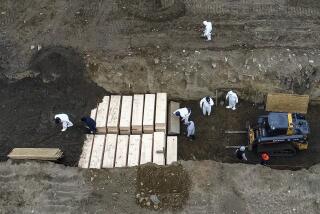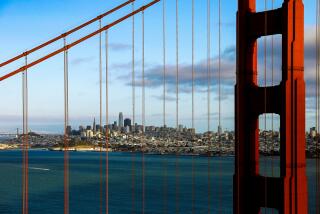Building dense cities was California’s cure for the housing crisis. Then came coronavirus
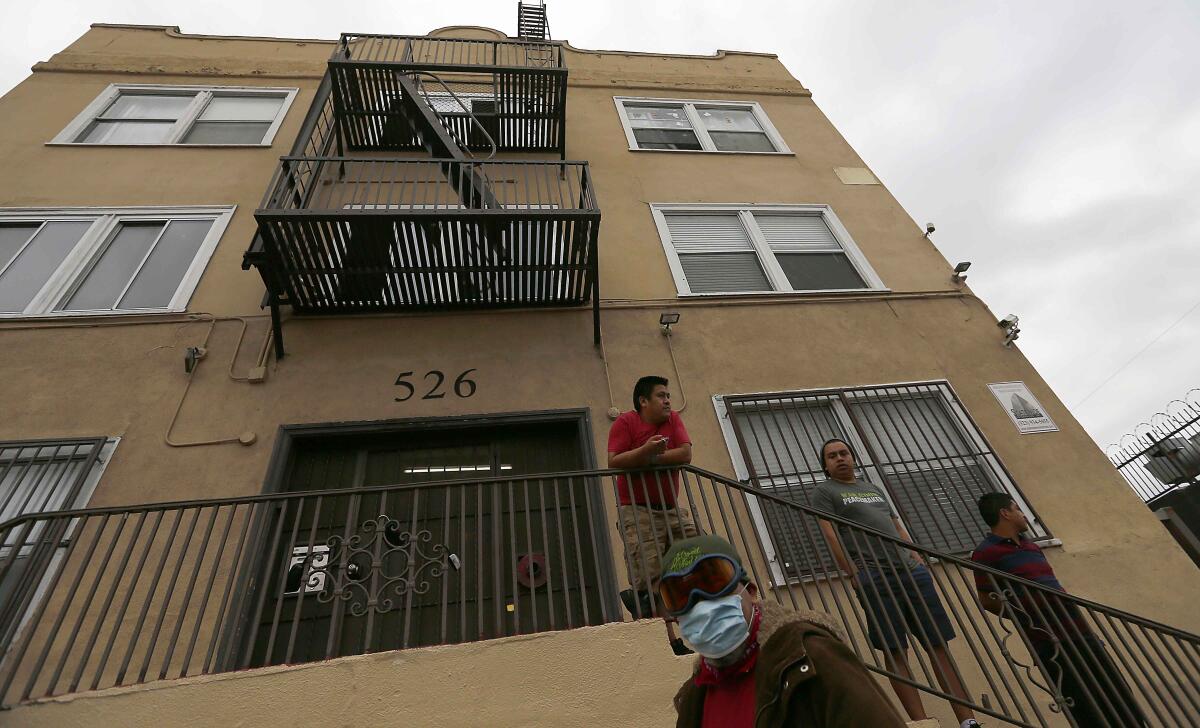
- Share via
For more than a decade, California lawmakers have pushed with increasing urgency to build more housing near transit stops and job centers. Density, they’ve reasoned, is the best way to control the exploding cost of living and reduce residents’ reliance on carbon-spewing vehicles in a state best known for its sprawling suburbs.
But now density has a new foe: the coronavirus.
Skeptics of greater urbanization say the pandemic has proved that they were right all along, pointing to orders from public health officials to use social distancing to slow the spread of the virus. Even some ardent urbanists worry that the speed with which the virus devastated packed neighborhoods could lead to a backlash against cities.
New York City, the nation’s densest major city, is a hotbed of the outbreak in the United States with more than 150,000 confirmed cases and 11,100 deaths. That state’s governor, Andrew Cuomo, has blamed high-rise apartment complexes and busy subways for the city’s plight.
“Why are we seeing this level of infection? Why cities across the country? It’s very simple. It’s about density,” Cuomo said at a recent news conference, punctuating his statement with a PowerPoint slide emblazoned with “DENSITY” in all capital letters. The coronavirus, the governor continued, “is very contagious. The dense environments are its feeding grounds.”
At the same time, there’s lots of evidence that shows density isn’t destiny.
Highly populated cities in Asia, including Seoul, Tokyo and Hong Kong, have seen a fraction of New York’s cases. The same is true for America’s next densest big city, San Francisco, which issued a shelter-in-place order nearly a week before the East Coast metropolis. As of Saturday, the Bay Area city had reported only about 1,300 confirmed cases — compared with more than 8,450 in the city of Los Angeles.
Nevertheless, speculation about how dense neighborhoods may have contributed to the coronavirus’ spread will almost certainly have an effect on California’s political debates and could affect how the state grows for years to come.
Before now, the state’s march toward densification had been cast as the safest way forward.
Moving from cities dominated by single-family homes toward those with townhomes, apartments and even high-rises would allow for new housing to accommodate job growth without gobbling up outlying areas prone to wildfires and straining water resources.
Calls for greater density have only escalated as massive, wind-driven fires have rampaged through suburban and urban locales. State climate regulators also have said California won’t meet its ambitious greenhouse gas reduction goals without cutbacks in driving — and that will only come if more people live closer to where they work and shop.
Such changes, if enacted, could end up reshaping Los Angeles, which is dominated by single-family homes and seemingly endless stretches of low-rise commercial boulevards. San Francisco, by contrast, has apartment complexes ringing its Financial District and other commercial cores, and about half as much developable land set aside for single-family homes as L.A.
The highest-profile efforts to increase residential density in California have come from state Sen. Scott Wiener (D-San Francisco), who tried through Senate Bill 50 to push mid-rise apartments near transit stops and job centers. His legislation failed three times in Sacramento amid opposition from suburban homeowners, low-income tenant advocacy groups and Los Angeles-area lawmakers.
Wiener said Cuomo was wrong to blame density for New York City’s woes and instead should take responsibility for his slow response to the virus. Cities in the Bay Area and around the world have shown that strong, proactive measures from government and public health officials matter much more than how dense a community is when it comes to preventing deaths from COVID-19, he said.
California’s housing and climate change problems aren’t going away, Wiener argued, and adequately addressing them will require more home building in already developed places.
“It’s not environmentally sustainable to keep sprawling out further and further,” said Wiener, who has authored another bill to build more housing in single-family-home neighborhoods.
However, he said he expects longtime opponents of his measures will use the pandemic as another reason to attack them.
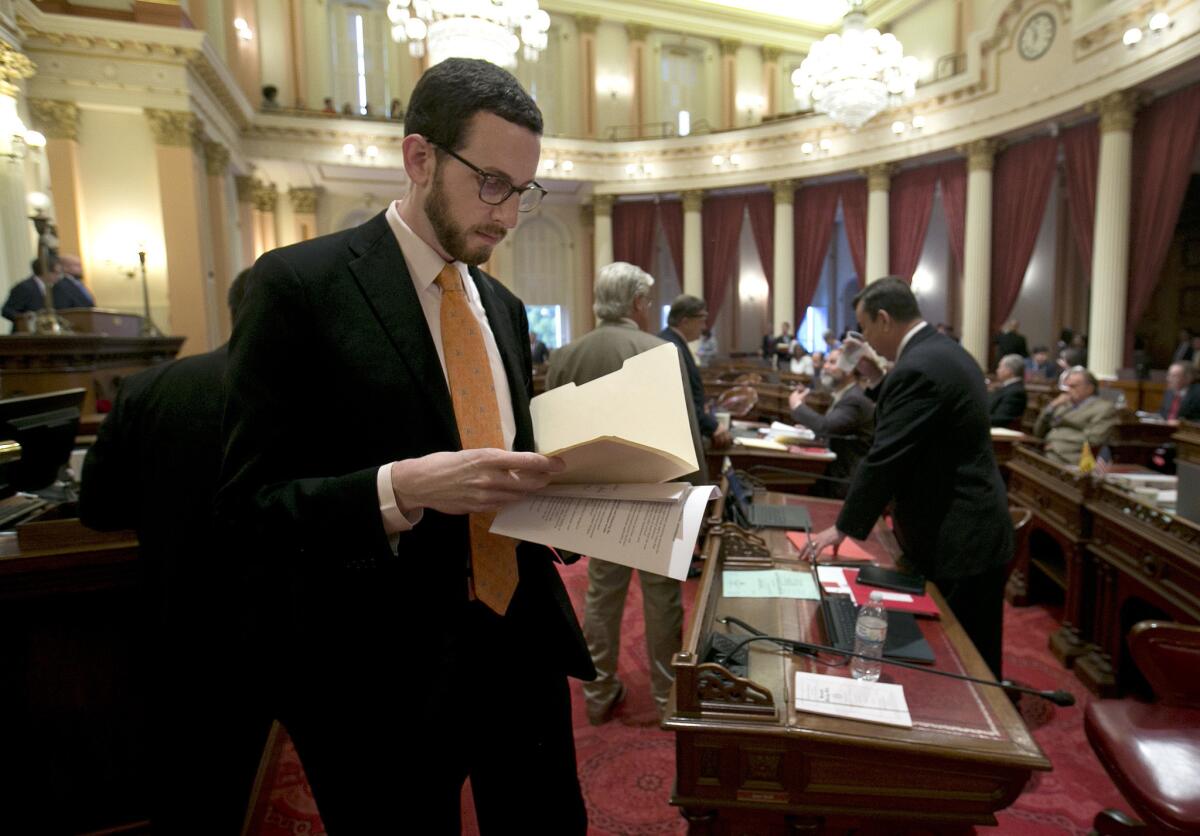
And as well they should, said Susan Kirsch, a Marin County activist and former head of Livable California, a slow-growth organization.
Kirsch said the public health guidelines to slow the coronavirus show that efforts to fast-track housing near job centers and prevent neighborhood groups from blocking such developments are a mistake. Millions of Californians are now working from home, she said, taking vehicular traffic off the roads and showing that businesses can function in a more environmentally friendly way, all without the need to upend the state’s landscape.
“If the coronavirus becomes the example where it becomes more clear to everybody how delusional the push for more density is, it shows the opposition we’ve been bringing up all along was well founded,” Kirsch said.
In some ways, the coronavirus outbreak falls in line with viral plagues that have ravaged dense places for millennia, said Edward Glaeser, an economist at Harvard University and author of the book “Triumph of the City.” It’s only recently that metropolises have largely escaped such disasters.
“There are always demons that creep in when human beings are living very close to one another,” he said.
Across the country, denser counties are seeing higher rates of coronavirus infections and deaths from COVID-19, even after taking into account factors such as weather, race and age, according to an analysis by Jed Kolko, chief economist with the jobs website Indeed.
Still, he said a variety of factors associated with denser places, such as being hubs for international air travel, might be a better explanation for the disproportionate number of cases, rather than a simple concentration of apartment dwellers. Also, given the uneven rates of testing and the likelihood that the pandemic is in an early stage of spread, Kolko said the infection patterns may change.
“It’s way too soon to put up the scorecard of how different places will ultimately fare,” he said.
An analysis by New York University’s Furman Center found no relationship between the coronavirus and overall population density within New York City, with neighborhoods in Manhattan, the city’s densest borough, having some of the lowest infection rates. However, the study did find that the virus is more prevalent in areas of New York where more people are crowding into homes.
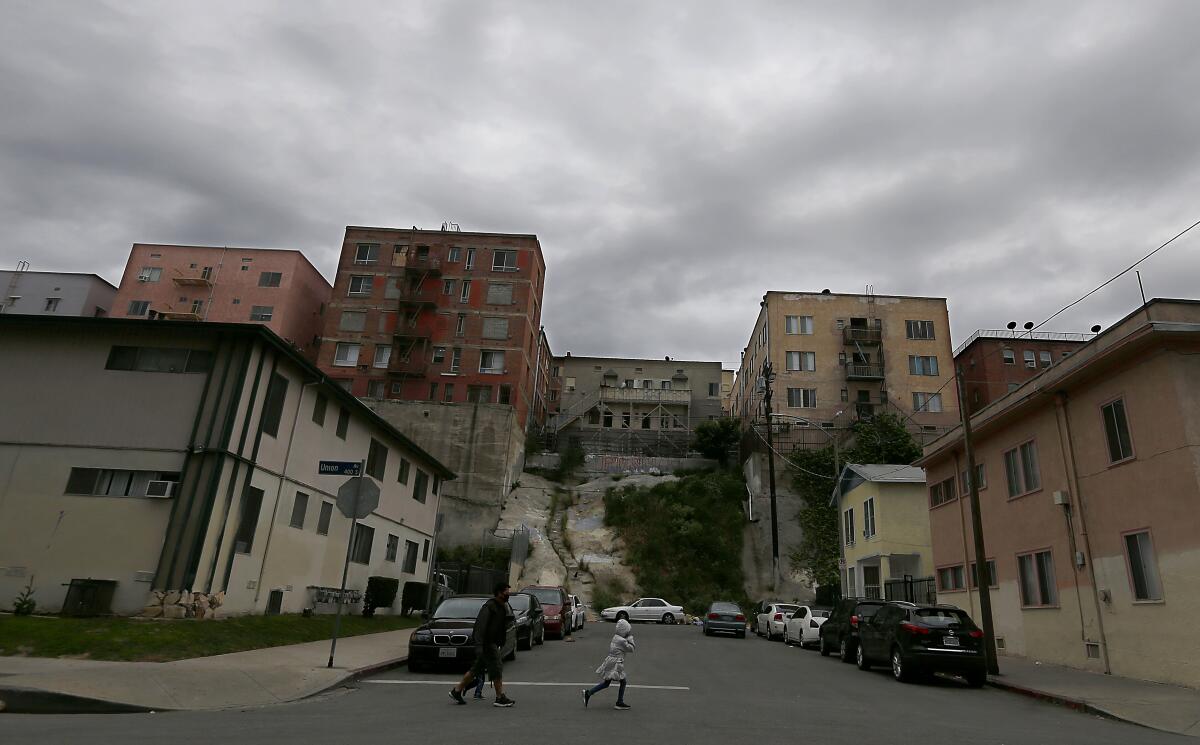
While Los Angeles isn’t known for its dense landscape, the county is home to five of the 10 most “crowded” ZIP Codes — including the No. 1 most crowded — in the U.S., a recent Times analysis found. That means people are living in neighborhoods dominated by homes with more than one person per room, excluding bathrooms.
Public health officials are especially worried about the close quarters accelerating the spread of the virus.
For decades, discriminatory housing policies and poverty have forced many people of color into the margins of many communities, where there’s little choice but to live in overcrowded homes and apartments, clustered near highways and industrial sites, and away from well-kept parks and other open spaces, said Jay Pitter, a Toronto-based urbanist who has written about the debate over density and the coronavirus.
Such living situations have helped lead to increased rates of diabetes, hypertension and asthma — part of the reason why black Americans are dying from COVID-19 at a much higher rate than white Americans.
“It’s not density itself,” Pitter said. “It is the fact that bad density plus social inequality is a deadly mix.”
Glaeser, who advocates for greater urban development, said that the pandemic has revealed the need for a significant investment in public health to make cities safer and to continue their ascent as economic engines.
Still, the kind of increases in density that are being considered in California doesn’t worry him.
“We’re not exactly talking replacing Beverly Hills with the Dharavi slum here,” Glaeser said. “A little bit of townhouses near BART stations is hardly going to be a recipe for disaster.”
More to Read
Sign up for Essential California
The most important California stories and recommendations in your inbox every morning.
You may occasionally receive promotional content from the Los Angeles Times.

